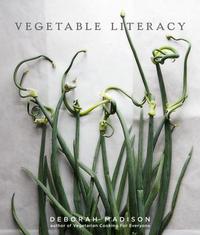Don’t forget: the books mentioned below are available at 20 percent off for tablehopper readers for two weeks following this mention at Green Apple Books—simply use the code “tablehopper” at checkout (either at the store or online) for your discount.
With spring produce in full swing and summer approaching, it seems an appropriate time to examine a few new books that can help turn NorCal’s seasonal bounty into delicious meals. Both focus on vegetables, and both will make your mouth water.
Mr. Wilkinson’s Vegetables: A Cookbook to Celebrate the Garden Matt Wilkinson
Let’s start with Mr. Wilkinson’s Vegetables: A Cookbook to Celebrate the Garden by Matt Wilkinson (Black Dog & Leventhal, $27.95). The British-born, Melbourne-based Wilkinson has a cult following for his fresh, seasonal food. Of note is his franchise of 11 Spudbar slow-food, fast-food shops (an interesting concept covered recently in the New York Times by Mark Bittman).
Mr. Wilkinson’s Vegetables contains about 80 recipes, arranged A to Z by the main vegetable, from asparagus to zucchini. Each featured veggie includes two pages of introduction—notes on growing, preparing, and using. The recipes are not strictly vegetarian, but they do present a nice range of dishes: some inventive (salad of cauliflower, smoked salmon, and strawberry); some meat-centric (smoked and baked garlic with a simple good old roast chicken); and some just straight-up mouthwatering (horseradish wafers!).
The book is nicely illustrated with a picture of each dish, and it’s handsomely bound—it’ll look good on the coffee table for sure. And for just $27.95, it’s a pretty reasonable gift for yourself or the vegetable lover in your life.
Vegetable Literacy

Deborah Madison
In a more educational and comprehensive vein is Vegetable Literacy by Deborah Madison, fresh off the press from local cookbook publisher extraordinaire Ten Speed Press. This might end up being required reading for culinary students, as it arranges vegetables (and other edible plants) by family.
Each section introduces a family, including a bit about where and how it grows, using the whole plant, and suggested companions. Then come the specific plants and recipes (all vegetarian, some vegan).
Take, for example, the goosefoot and amaranth families. There’s a scientific clarification of the relation between the families, a personal observation about how the leaves are shaped like goose tracks, then a feature on spinach, perhaps the most notorious member of the family. It includes a short guide on selected varieties, notes on how to use the whole plant, kitchen wisdom (like “expect ¾ to 1 cup of cooked leaves from a pound of good-quality fresh spinach”); and suggested companions for spinach (basil, polenta, lemon, eggs, sesame seeds, etc.). Recipes tend to be pretty straightforward: open-faced sandwich of spinach, caramelized onions, and roasted peppers; or rice with spinach, lemon, feta, and pistachios. Other members of the family include quinoa, quelites, beets, and more. And this is just one of 12 families!
Vegetable Literacy is a hefty tome with more than 300 recipes, mostly classic and simple. It’s the kind of book that makes you seek out new ingredients at the farmers’ market. And, of course, it’s well illustrated with full-color photographs throughout. Reasonably priced for such a comprehensive guide at $40, it’s an essential addition to any cookbook collection.
Thanks for reading, and bon appétit!



